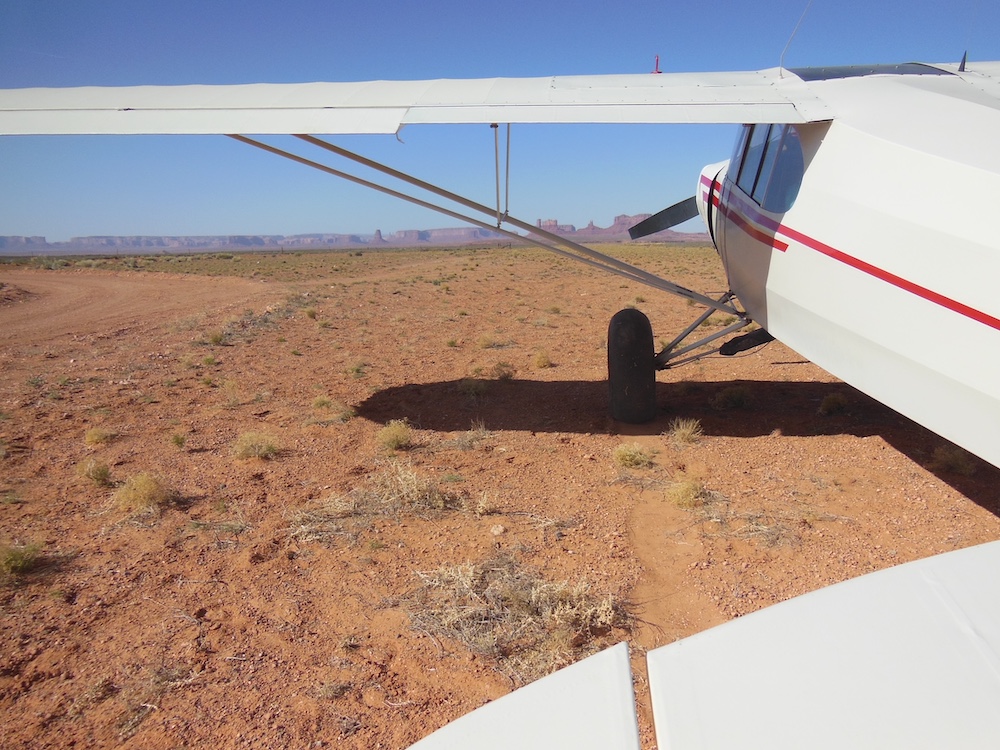CALL TO ACTION: BEARS EARS NATIONAL MONUMENT

The BLM is holding a Public Scoping period for the Bears Ears National Monument (BENM) until 10/31/2022 to gather topics and criteria that the public thinks are important for the BLM to consider as they prepare the Resource Management Plan (RMP) and corresponding Environmental Impact Statement (EIS), required by federal legislation.
RAF Utah Liaison and Utah Back Country Pilots board member Wendy Lessig says, “It is essential that we encourage the BLM to include aviation as an allowed use in the BENM RMP. There are 22 scenic and popular backcountry airstrips either in or near the BENM that could potentially be affected. Please help preserve access to these treasured assets. Your voice counts!”
This is a separate BLM project from the recent Grand Staircase-Escalante RMP. Please submit your BENM comments directly to this link:
https://eplanning.blm.gov/eplanning-ui/project/2020347/595/8003161/comment
The deadline to submit public comments is OCTOBER 31, 2022.
WE NEED YOUR HELP TO PRESERVE 22 OF
UTAH’S MOST SCENIC BACKCOUNTRY AIRSTRIPS
Here are talking points for reference. Please submit your own individualized comments based on the below:
- Aviation should be included in the RMP as an allowable use.
- Most Utah backcountry airstrips have been in existence since the 1950s, predating the 1964 Wilderness Act. Access and use of these airstrips should be retained.
- Aviation has a very small environmental footprint, the lightest footprint form of access to these lands. Airstrips do not have driving wheels and once landed, do not go “off trail.” Noise from aircraft is transient and of short duration.
- Airstrips are situated on natural flat land features, such as level, open meadows with little occurrence of soil disturbance or erosion.
- Airstrips provide vital access to aid Search and Rescue, emergency response, and firefighting.
- Airstrips offer possible life-saving options when small aircraft encounter mechanical problems or deteriorating weather conditions while flying over the relatively hostile terrain in southern Utah.
- Airstrips are an excellent resource to the administrative needs for supervising the lands.
- Airstrips transcend the need for roads and offer widely dispersed recreation activities.
- Peer-reviewed research substantiates that small aircraft noise has no detrimental impact on wildlife.
- Backcountry airstrips offer recreational access to the disabled and those with limited mobility and without the need for strenuous physical activity to enjoy our public lands.
- Airstrips are trailheads: aviators are non-motorized recreationists, participating in hiking, camping and other low-impact activities.
- Backcountry aviation offers a positive economic impact, with aviation fuel sales, food and lodging, sale of provisions and supplies, and other tourist-related support for the surrounding communities.
- The Recreational Aviation Foundation and the Utah Backcountry Pilots have successfully renewed MOUs in place with the BLM to provide cooperative maintenance of backcountry airstrips.
Your public comments count.
Thank you for helping preserve these unique and priceless
backcountry aviation assets.
These 22 airstrips are in or near the BENM and could potentially be affected:
AZ Minerals (03UT) – 37.1191 N / 109.9838 W
Browns Rim – 37.854 N / 110.2988 W
Castle Creek – 37.3995 N / 110.4713 W
Clay Hills Crossing – 37.317 N /110.3674 W
Dark Canyon North – 37.89585 N / 110.08898 W
Dark Canyon South – 37.8242 N / 110.0901 W
Deer Flat – 37.6654 N / 110.0271 W
Dry Fork Creek – 38.09334 N / 109.616 W
Fry Canyon – 37.6515 N / 110.1709 W
Hammond – 37.6843 N / 109.7732 W
Long Canyon – 37.7817 N / 110.15883 W
Mineral Canyon (UT75) – 38.5293 N / 109.9946 W
Mule Canyon – 37.4739 N / 109.7096 W
Needles Outpost – 38.1706 N / 109.7416 W
Nokai Dome – 37.2787 N / 110.5721 W
Paiute Canyon – 37.6495 N / 110.2989 W
Polly Mesa – 37.38772 N / 110.1237 W
Red Canyon Meadow – 37.57968 N / 110.17197 W
Red House Spring – 37.4815 N /110.1843 W
Rustler Canyon – 38.2724 N / 109.7263 W
Valley of the Gods – 37.25307 N / 109.9204 W
Wee Hope Mine – 37.5715 N / 110.224 W Dry Fork Creek – 38.09334 N / 109.616 W
Submitted on September 29, 2022.

I am a back country pilot and highly support and encourage the use of pilots to access any and all blm zones that would support landings and takeoffs.. flying is essential to so many aspects of seeing this great planet.. please allow and support these and more places.. thank you in advance..
Blair Gardner
As an avid aviator I feel access to the airstrips is important for the use of the land. I regularly explore the backcountry in my plane.
I will come up with some kind of comment or response to help keep this preserved open for us aviators I live in the central mountains of Colorado and I’ve seen all the wilderness is take over there old mining roads etc. been closed down would like to see this open for flying
my submission to BLM:
I have travelled to many backcountry airstrips using my aircraft. While there we enjoy the scenery, hiking and camping. As a pilot who enjoys access to backcountry airstrips across Utah, Colorado and other Western States, I strongly urge the BLM to include preserving airstrips in Bears Ears National Monument. It is imperative to define each airstrip within the BLM district as unique and separate from current trails or roads as allowable use for aviation. The airstrips in question are in a primitive and remote location and could be a lifesaving alternative to the rugged terrain in the event of an in-flight emergency. Backcountry airstrips not only serve a purpose of recreation and enjoyment but are also a safe haven for pilots in distress. These established airstrips are native to the area and were built decades ago. The historical aspect is also something to consider. Accessing the backcountry by aircraft is a very low impact mode of transportation and brings a positive economic impact to local communities. The Recreational Aviation Foundation and the Utah Backcountry Pilots have successfully renewed MOUs in place with the BLM to provide cooperative maintenance of backcountry airstrips, resulting in little burden to the taxpayer. Please consider stronger protection and advocacy for the following airstrips:
AZ Minerals (03UT), Browns Rim, Castle Creek, Clay Hills Crossing, Dark Canyon North, Dark Canyon South, Deer Flat, Dry Fork Creek, Fry Canyon, Hammond, Long Canyon, Mineral Canyon (UT75), Mule Canyon, Needles Outpost, Nokai Dome, Paiute Canyon, Polly Mesa, Red Canyon Meadow, Red House Spring, Rustler Canyon, Valley of the Gods, Wee Hope Mine.
The environmental impact of aircraft use of established airstrips is very, very minimal, especially as compared to OHV use. Therefore, I disagree with lumping aircraft use of established airstrips in with OHV use. My concern is that some bad actors using OHVs will cause the BLM to severely restrict their use, thus impairing the use of established airstrips. Therefore, the existing airstrips should be clearly defined and made specific to the BLM’s plan.
Access needs to be permitted, aviators come from all over to do this type of backcountry flying, including myself. Not only does it help the states economy due to the “final stops” in more populated areas from all aircraft, but the social media presence that aviators share of this scenery and way of access promotes more positive tourism. Aviators are the most respectful preservative group of people I’ve ever been around and experienced in the backcountry in many of our states.
As I pilot with a fused foot, that has limited my ability to hike, I am so appreciative of having the ability to fly into areas that would otherwise not be accessible to me and other people with disabilities. Please keep these areas open to aircraft, for numerous reasons including the ability to provide access to people with disabilities. Thank you!
Thanks for your comment, Dale. If you haven’t already, we encourage you to submit your comments to the BLM link above.
Thank you for your support.
Kodi